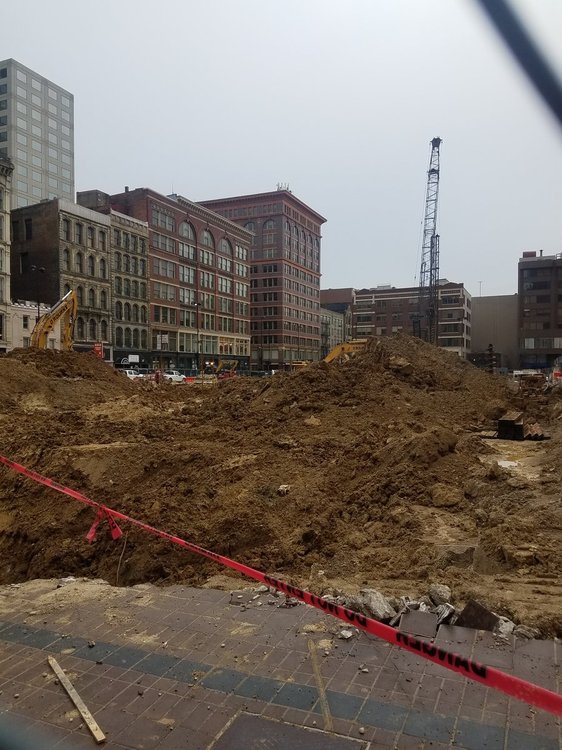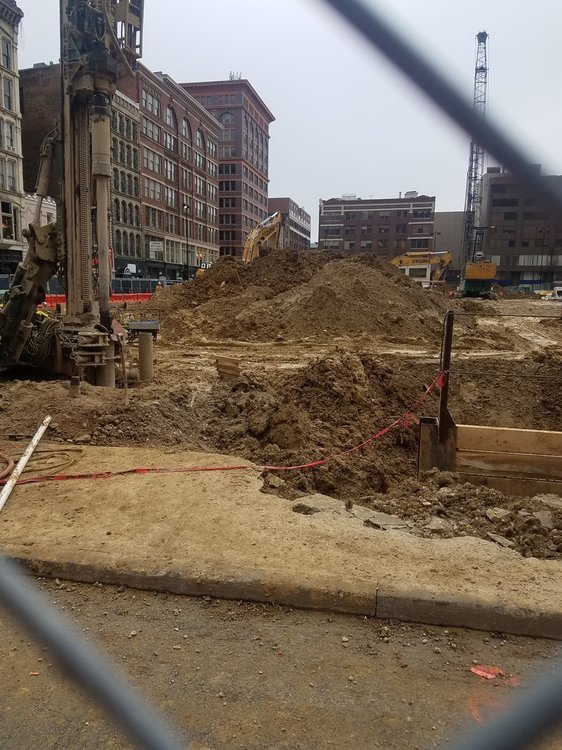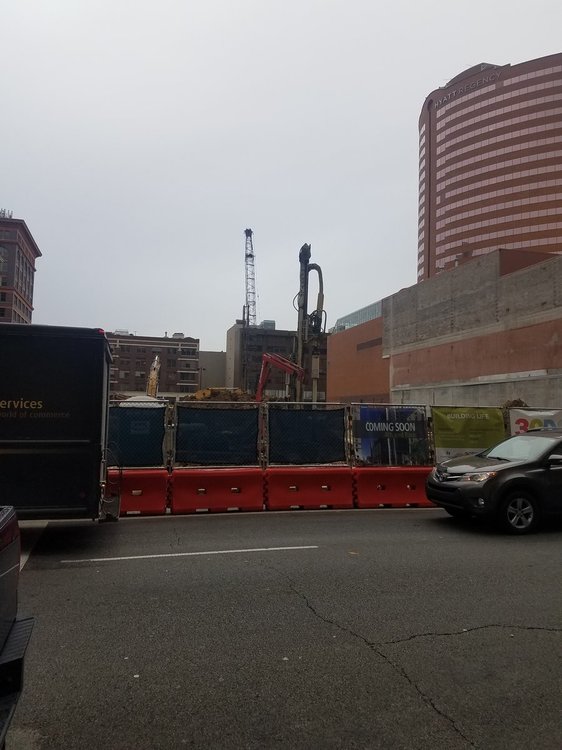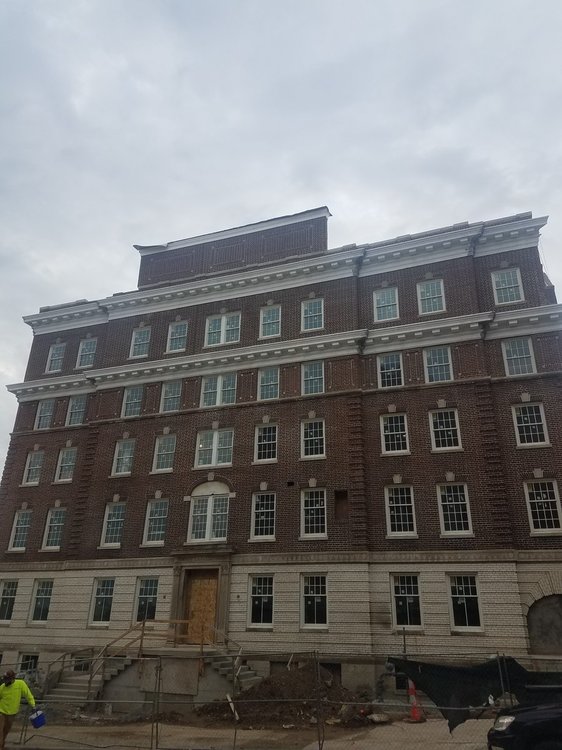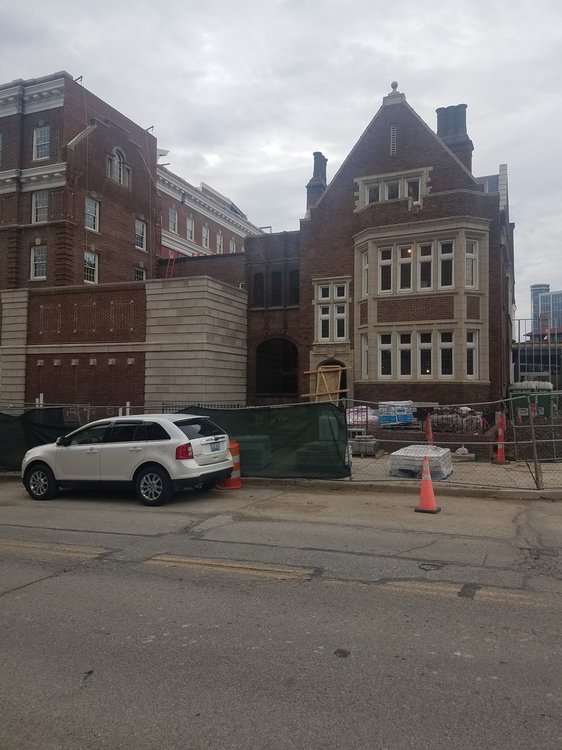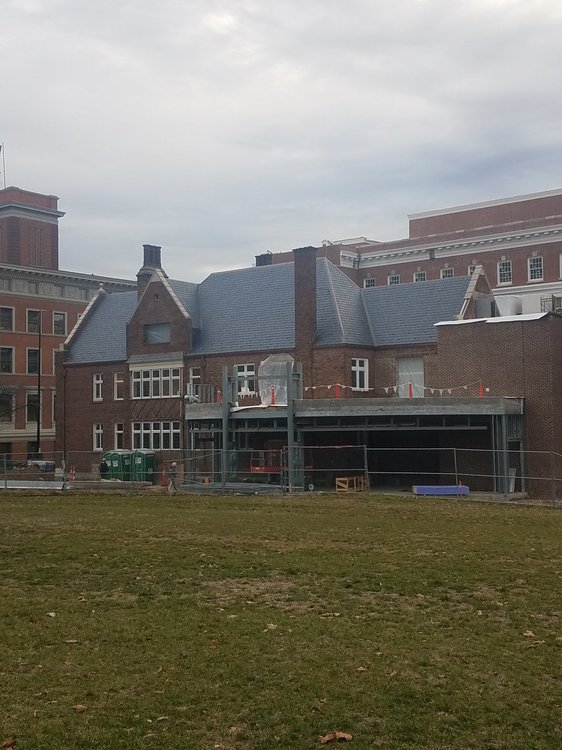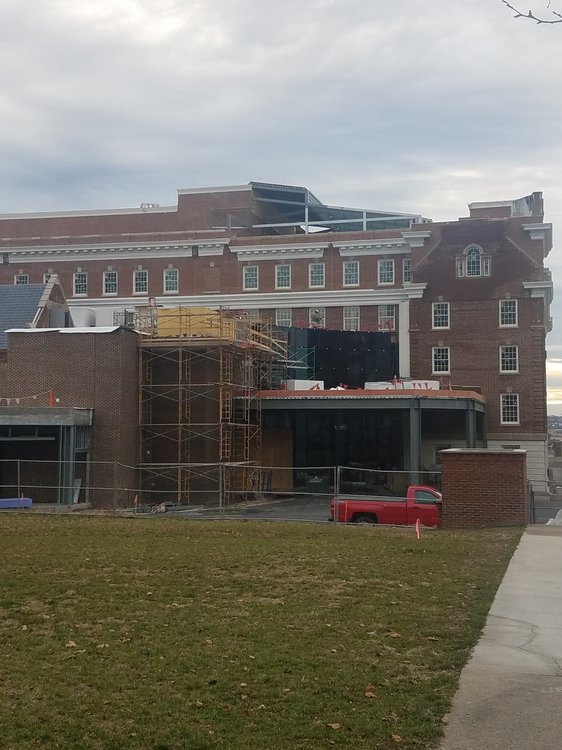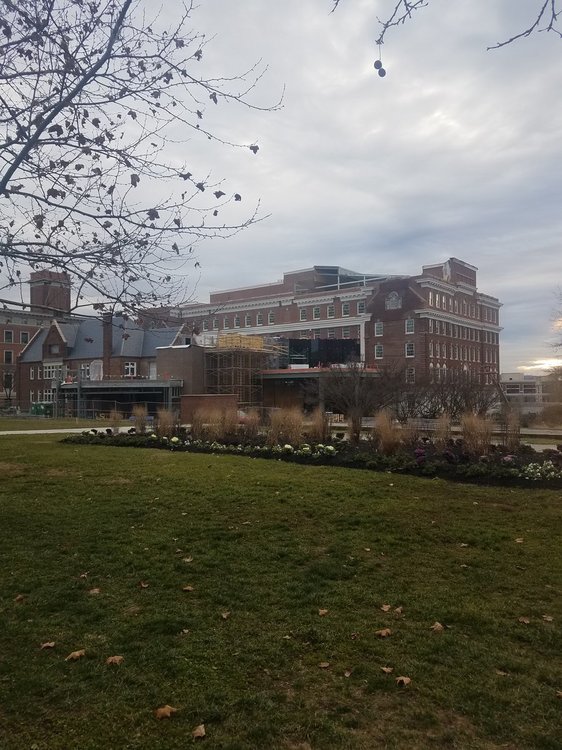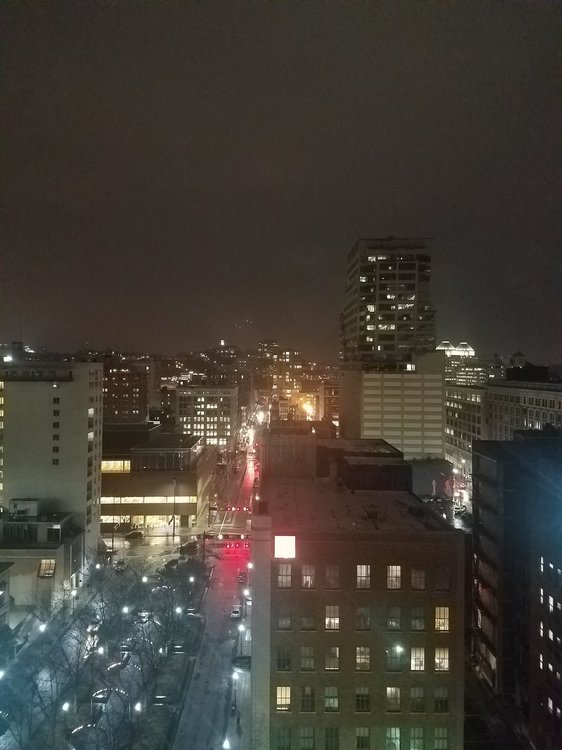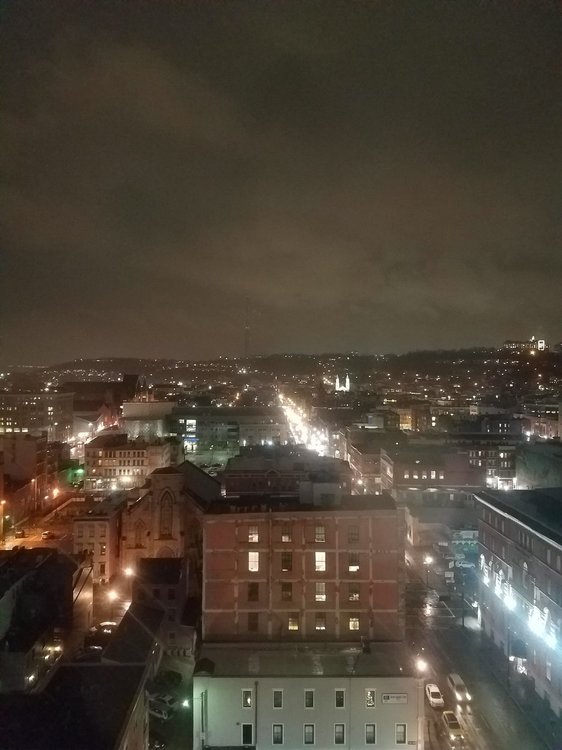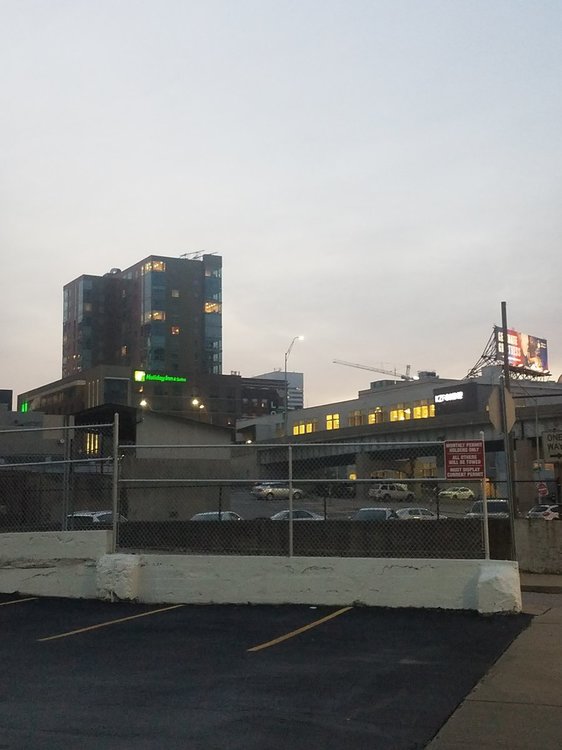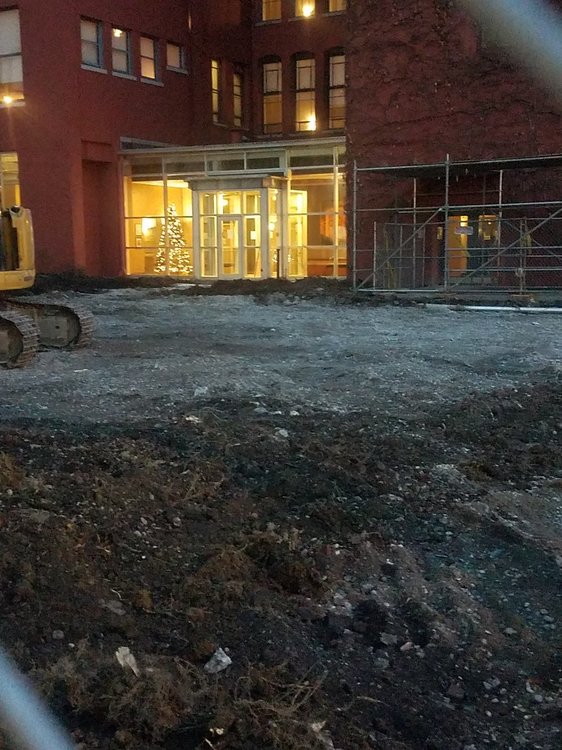Everything posted by DEPACincy
-
Cincinnati: Downtown: The Banks
I would be comfortable sticking Louisville in my progression between Cincinnati and St. Louis. You could also tack NYC on the front. So it goes: NYC --> Philly --> Bmore --> Pittsburgh --> Cincinnati --> Louisville --> St. Louis So Philly is a mixe of NYC and Bmore. Bmore is a mix of Philly and PGH. PGH is a mix of Bmore and Cincy. And so on. This is a fun game haha.
-
Cincinnati: Fountain Square: Development and News
Philly for sure. When I lived there you dealt with tourists on a daily basis taking pictures of all the buildings in your neighborhood, and not just in Old City/Society Hill. But it's also a living, 21st Century city with a downtown population of 200,000 people (largest outside NYC) and a metro population of 6 million+ so its obviously a different beast.
-
Cincinnati: Downtown: The Banks
Sure it could be denser but the topography, as mentioned, is why it isn't. It affected the development patterns from the very beginning, and dense urban development spilled across the river because it was easier than going up the hill. Also, it was already pointed out, but Cincinnati did used to be much denser. You mentioned Walnut Hills, but if you look back at old maps the western portion of Walnut Hills was just as dense as OTR. Corryville was also a lot denser. And I do see the parallels between Bmore and Cincy but they certainly have big differences, aside even from the topography. Pittsburgh, to me, feels like the missing link in the Bmore to Cincy evolutionary chain. I think of it as a progression. Philly --> Bmore --> Pittsburgh --> Cincinnati --> St. Louis Going from bigger/denser/more east coast to more sprawling/midwestern/southern.
-
Cincinnati: Fountain Square: Development and News
Not directly downtown but Pittsburgh has a shopping district in Shadyside that has an Apple Store, Sephora, Lululemon, etc. https://goo.gl/maps/HiPCkesEgqP2 Baltimore also has a lot of those types of stores around the Inner Harbor.
-
Cincinnati: Downtown: The Banks
Having spent a lot of time in both I would posit that the biggest difference between the two is topography. Cincinnati's topography is limiting. You have a very dense neighborhood adjacent to downtown in Mt. Adams but it does not feel like a part of the city, but rather very removed from it. Uptown feels like it is on the other side of the world in relation to downtown. Compare that to neighborhoods near downtown Baltimore which are very much interconnected with downtown and its other surrounding neighborhoods. Baltimore is only slightly larger than Cincinnati (81 sq. miles vs. 78 sq. miles) but has double the population. It is very dense because there is lots of flat land near downtown to build on. If Cincinnati had the same population as Baltimore it would feel twice as dense as Baltimore because the population would have to be more clustered on what flat land is available.
-
Cincinnati: Downtown: Fourth & Race (Pogue Garage) Redevelopment
-
Cincinnati: Downtown: Autograph Collection Hotel (Anna Louise Inn)
-
Cincinnati: Random Photos
-
Cincinnati: Random Development and News
So calling it Sycamore Place at St. Xavier Park will finally be accurate haha.
-
Cincinnati: Downtown: 1010 On The Rhine / Downtown Kroger
Yesterday I noticed that you can see the crane poking out from the corner of Culvert and New Streets down in the P&G parking lot district. I snapped a pic. Also, check out the progress on the Downtown Kroger instagram feed:
-
Cincinnati: Over-the-Rhine: Development and News
I wish my Larosa's came from the Clifton location. I forgot about Zablong and Midici. I didn't know they were on Uber Eats though. I really like Zablong but I was not impressed with Midici. I saw that it is under new management now though.
-
Cincinnati: Random Development and News
Anybody have any idea what's going on at the Sycamore Place apartments? Here are pictures of their parking lot yesterday evening and a street view image from May. They've completely torn up their parking lot.
-
Cincinnati: Random Development and News
Seems to me that the most likely thing would be office space for a company already in the CBD like Kroger or P&G. With 84.51 right there it seems like Kroger would be the most obvious choice.
-
Cincinnati: Over-the-Rhine: Development and News
This. Downtown delivery options are actually pretty limited. I don't mind walking up to Goodfella's to grab a pizza but sometimes you just want someone to bring the pizza to you. Downtown you can do crappy Papa John's or Domino's, or you can have Donato's in Bellevue deliver across the river. The Larosa's in Queensgate is the absolute WORST and no one should ever order from there.
-
Cincinnati: Western Hills Viaduct
In fairness, the Trump Administration has shifted these grants to primarily rural areas--so Cincinnati isn't alone in missing out. This is especially the case for the BUILD program. Only one urban BUILD grant was awarded in the entire state, and that was to Youngstown. There were an additional two rural BUILD grants, one in Geauga County and one in Monroe County.
-
Electric Scooter Sharing
I saw an article saying this was happening but they're still here in Cincinnati and I saw them in Oxford yesterday too.
-
Ohio Census / Population Trends & Lists
This is more optimistic than the state's estimates. The state has Hamilton County losing population in every five year period between 2010 and 2050, which is already wrong based on the latest Census estimates. The state also has Butler, Warren, and Clermont Counties growing until 2040 and then losing population between 2040 and 2050. 2010 Hamilton - 802,374 Clermont - 197,363 Warren - 212,693 Butler - 368,130 Total for Ohio part of the metro - 1,580,560 2050 Hamilton - 783,890 Clermont - 215,610 Warren - 238,400 Butler - 429,160 Total for Ohio part of the metro - 1,667,060 So only an additional 86,500 for the Ohio side. Obviously I think this is wrong, especially for Hamilton County. I just don't see it losing almost 20,000 residents between now and 2050.
-
Ohio Census / Population Trends & Lists
I hear you. But 43201 is a large zip code. It's very possible that Short North has been gaining households (it has) and areas like this have been losing: https://goo.gl/maps/ApSYpVAqfrQ2 https://goo.gl/maps/GTatENdgb942 And combine that with the household size paradox I've mentioned here multiple times and it is very believable that 43201 has lost population. Because, again, it is a very common phenomenon for rapidly gentrifying areas to actually lose a lot of population. Here is an example: https://tigerprints.clemson.edu/cgi/viewcontent.cgi?article=3619&context=all_theses "Though seemingly paradoxical, the decrease in black residents and influx of white residents reflects a “back to the city” movement happening across the country. Population density decreases can be seen in downtown Charleston as young, white, middle-class residents begin to move in."
-
Ohio Census / Population Trends & Lists
Convenient since we don't have data for 2018. But also not at all useful since one year does not make a trend.
-
Ohio Census / Population Trends & Lists
https://factfinder.census.gov/faces/nav/jsf/pages/searchresults.xhtml?refresh=t
-
Ohio Census / Population Trends & Lists
Why? It seems like you've claimed a lot of things (Cleveland is growing faster than Cbus/Cincy, Downtown Cle has the fastest growing zips) but when you're presented with the actual data you say it can't be right because you FEEL that it is wrong. But you haven't presented any data to the contrary. Your GDP data was interesting but it isn't jobs or population growth, and it was one year. Cincy and Cle have been trading places as the largest GDP this entire decade. And you jobs numbers didn't show what you initially said it did, and even then it is again only one year. You have to be willing to look at and analyze trends and put aside your biases. I really, really WANT downtown Cle, Cincy, and Cbus to be the fastest growing places in Ohio. I really want young people to flock here from all over the country and world and fill up our urban neighborhoods. But the fact of the matter is that the fastest growing places in Ohio are the Columbus suburbs, not our downtowns.
-
Ohio Census / Population Trends & Lists
So my initial reaction to the data was the same. And my own experience in downtown Cincy tells me that there's no way it lost population. But then I set aside my biases and put on my demographer cap and it becomes a lot more believable. As I said, a boom in households isn't the same as a boom in population. When you build a new housing subdivision in the suburbs you are building where nothing existed before and each new house has 3-5 people in it. When you build in 43215 or 45202 you are building in places where folks already lived. And in many cases those folks are leaving with their large households and being replaced by single person and two person households. One large housing project can hold as many people as all the new housing built in downtown Cincy or downtown Cbus this decade. So could these numbers be off? Sure. In some cases the MOE is quite high. But I'd trust them over my own gut reaction because they're based in a real scientific methodology and one that is the best available vs. my own "well I SEE new development happening" reaction.
-
Ohio Census / Population Trends & Lists
So I was curious if this was true and did a little research. I pulled 2017 and 2010 population totals. Here are the top 10: 43026 (Hilliard): +7,642 43123 (Grove City): +5,912 43015 (Delaware): +5,745 43229 (Cbus): +5,354 43224 (Cbus): +5,200 43230 (Gahanna): +5,170 43054 (New Albany): +4,673 43110 (Canal Winchester): +4,427 43016 (Dublin): +4,367 43228 (Cbus/Lincoln Village): +3,857 So every single one of the top ten is in Central Ohio and every single one of the top 10 is suburban. You could call 43224 urban. But there are no downtown or near downtown zips on the list. So where do urban zips rank? A selection: 48... 43215 (Downtown Cbus): +1,532 49... 44114 (Downtown Cle): +1,489 51... 45219 (Uptown Cincy): 1,483 84... 45208 (Hyde Park): +932 89... 45209 (Oakley): +868 111... 43205 (Old Towne East): +641 115... 44113 (Ohio City/Tremont): +617 223... 43206 (German Village): +280 236... 45223 (Northside): +252 622... 44115 (Downtown Cle): -26 644... 45206 (Walnut Hills): -36 1,165... 44106 (University Circle): -1,060 1,188... 45202 (Downtown Cincy): -1,931 1,196... 43201 (Short North/University): -3,633 And just for fun, here are the bottom five: 43223 (South Franklinton): -2,250 43607 (Toledo): -2,398 44108 (Glenville/Forest Hills): -3,631 43201(Short North/University): -3,633 44120 (Buckeye-Shaker/Shaker Heights/Mt. Pleasant): -3,640 So the big takeaways here are that the fastest growing zips in Ohio are still overwhelmingly suburban and all in the Columbus area. Some downtown zips are growing, but a few have lost quite a bit of population. But that is actually to be expected. Gentrifying areas generally don't actually gain population, at least not until the late stages of gentrification. That's because folks who previously lived in those zip codes were living with multiple people in a household and the newcomers tend to be in 1 and 2 person households. So you can be seeing a building boom all around you and actually be losing population.
-
Ohio Census / Population Trends & Lists
I actually am a demographer and urban planner. I also believe that Cleveland has stabilized and is trending in the right direction. I don't think anybody is disputing that. It does, however, depend on your definition of significant. Either way, I don't think any objective person would argue that Cleveland is outpacing Cincinnati or Columbus. The preponderance of data just don't support that idea. And again, I'm not a "booster bro" or whatever. I would like to see all three C's grow and prosper. We'd all be better off if that happened.
-
Ohio Census / Population Trends & Lists
I'm not actually even sure that what you posted is YOY now that I go back and check the math. My own calculations using Oct 17 to Oct 18 give this: Cleveland: 2% Cincinnati: 0.9% Columbus: 0.5% So I'm not sure where you got your percentages but either way it looks like it was a good year for Cleveland. That's positive and I hope it is indicative of a long-term trend.




